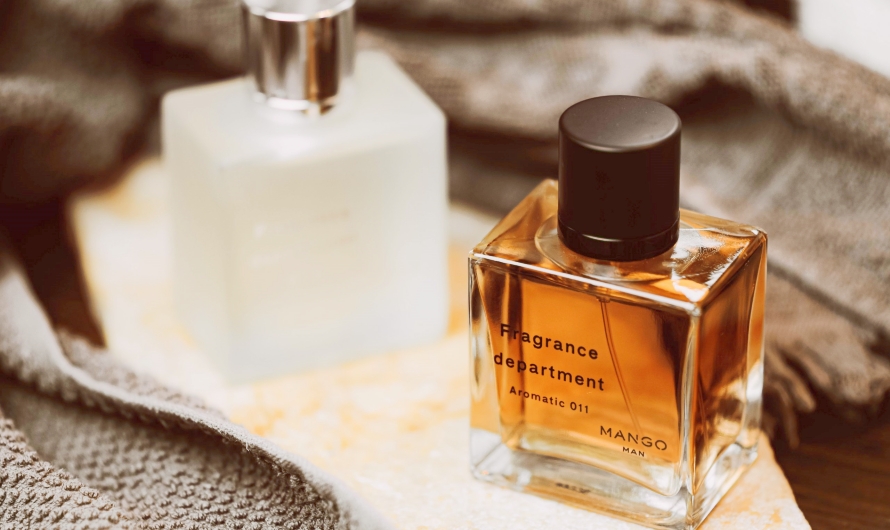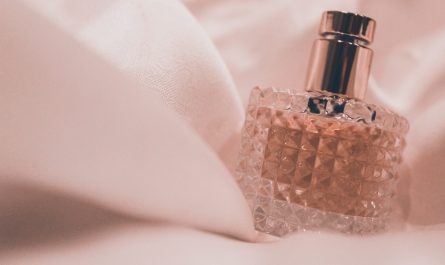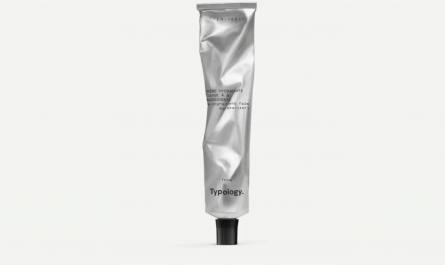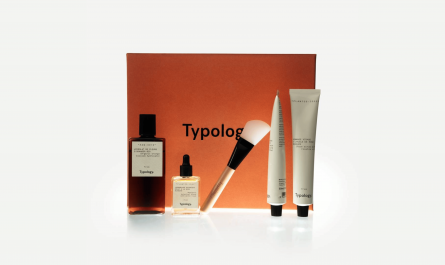Perfume is one of the most personal and expressive accessories you can wear. It can enhance your mood, boost your confidence, and create an impression on others. Perfume can also reflect your personality, style, and taste. But how do you choose the right type of perfume for you? And how do you apply it correctly to get the best results? In this article, we will explain the different types of perfume based on their concentration, and how to apply them correctly.
What is perfume and why is it important
Perfume is a mixture of fragrant oils, alcohol, and water that creates a pleasant smell when sprayed on the skin or clothes. Perfume can have various effects on the wearer and the people around them, such as:
- It can make you feel happy, relaxed, energized, or seductive, depending on the type of scent you choose.
- It can influence how others perceive you, as scent is closely linked to memory and emotion. A good perfume can create a positive impression on people you meet, whether it is for a date, a job interview, or a social event.
- It can express your personality, style, and taste, as different scents evoke different associations and moods. You can choose a perfume that matches your character and preference, or one that contrasts or complements it.
Therefore, choosing a perfume that suits you is important for your personal image and well-being. You want a perfume that reflects who you are, what you like, and how you want to be seen by others. You also want a perfume that lasts long and smells good on you.
The main factors that affect the quality and performance of perfume
Before we dive into the different types of perfume based on their concentration, we need to understand the main factors that affect the quality and performance of perfume. These factors are:
- The ingredients: The ingredients are the raw materials that make up the perfume. They can be natural or synthetic, or a combination of both. Natural ingredients are derived from plants, animals, or minerals, such as flowers,
fruits,
woods,
or musks.
Synthetic ingredients are created in laboratories,
such as aldehydes,
vanillin,
or coumarin.
The quality
and quantity of ingredients determine the complexity
and richness of the perfume. - The composition: The composition is the way the ingredients are blended together to create a harmonious
and balanced scent.
The composition consists of three layers:
the top notes,
the heart notes,
and the base notes.
The top notes are the first impression
of the perfume,
and usually last for a few minutes.
They are usually light
and fresh,
such as citrus,
herbs,
or green leaves.
The heart notes are the main theme
of the perfume,
and usually last for a few hours.
They are usually floral
or spicy,
such as rose,
jasmine,
or cinnamon.
The base notes are the lasting impression
of the perfume,
and usually last for several hours or even days.
They are usually woody
or sweet,
such as sandalwood,
vanilla,
or amber.
The composition determines the style
and mood of the perfume. - The concentration: The concentration is the amount of perfume oil in the alcohol and water base. The higher the concentration, the stronger and longer-lasting the scent. The concentration also affects the price and packaging of the perfume. The concentration is usually indicated by the following terms: eau de parfum, eau de toilette, eau de cologne, and eau fraiche. We will explain these terms in more detail in the next section.
The different types of perfume based on concentration
As we mentioned before, the concentration is one of the main factors that affect the quality and performance of perfume. The concentration is usually indicated by the following terms: eau de parfum, eau de toilette, eau de cologne, and eau fraiche. These terms refer to the percentage of perfume oil in the alcohol and water base. The typical percentages are:
- Eau de parfum: 15-20% perfume oil
- Eau de toilette: 5-15% perfume oil
- Eau de cologne: 2-5% perfume oil
- Eau fraiche: 1-3% perfume oil
Each type of perfume has its own characteristics, advantages, and disadvantages. Let’s take a closer look at each one.
Eau de parfum
Eau de parfum is the most common and popular type of perfume. It has a high concentration of perfume oil, which makes it strong and long-lasting. Eau de parfum can last for up to six hours or more on the skin, and even longer on clothes. Eau de parfum is suitable for people who want a noticeable and lasting scent, or who have dry skin that tends to absorb the fragrance faster.
What is eau de parfum and how does it smell
Eau de parfum is a type of perfume that has a high concentration of perfume oil, which makes it strong and long-lasting. Eau de parfum usually has a complex and rich composition, with a balance between the top notes, the heart notes, and the base notes. Eau de parfum can smell different depending on the ingredients and composition used, but generally it has a deep and warm smell that can be floral, oriental, woody, or gourmand.
How to apply eau de parfum correctly
To apply eau de parfum correctly, you need to follow these steps:
- Spray eau de parfum on your pulse points, such as your wrists, neck, behind your ears, or inside your elbows. These are the areas where your blood vessels are close to the skin surface, which makes them warmer and helps to diffuse the scent.
- Spray eau de parfum from a distance of about 15-20 cm from your skin, to avoid overloading or staining your skin or clothes.
- Spray eau de parfum sparingly, as it is strong and long-lasting. One or two sprays are usually enough for most people.
- Do not rub your wrists together after applying eau de parfum, as this can break down the molecules and alter the scent.
Examples of eau de parfum
Some examples of eau de parfum are:
- Chanel Coco Mademoiselle: A feminine and chic floral woody perfume launched by Chanel in 2001. It is a fresh and sparkling blend of orange,
bergamot,
jasmine,
rose,
patchouli,
and musk.
It is a youthful
and glamorous perfume that celebrates freedom
and femininity. - Dior Sauvage: A modern
and masculine fresh woody perfume launched by Christian Dior in 2015.
It is a powerful
and charismatic blend of bergamot,
pepper,
geranium,
lavender,
cedar,
and ambroxan.
It is a confident
and adventurous perfume that inspires success
and leadership. - Lancôme La Vie Est Belle: A sweet
and feminine gourmand floral perfume launched by Lancôme in 2012.
It is a bright
and breezy blend of pear,
black currant,
iris,
orange blossom,
praline,
and vanilla.
It is a cheerful
and charming perfume that evokes happiness
and beauty.
Eau de toilette
Eau de toilette is a type of perfume that has a medium concentration of perfume oil, which makes it moderate and short-lived. Eau de toilette can last for up to three hours or more on the skin, depending on the ingredients and composition used. Eau de toilette is suitable for people who want a subtle and refreshing scent, or who have oily skin that tends to retain the fragrance longer.
What is eau de toilette and how does it smell
Eau de toilette is a type of perfume that has a medium concentration of perfume oil, which makes it moderate and short-lived. Eau de toilette usually has a simple and light composition, with more emphasis on the top notes and less on the base notes. Eau de toilette can smell different depending on the ingredients and composition used, but generally it has a fresh and clean smell that can be citrusy, herbal, or aquatic.
How to apply eau de toilette correctly
To apply eau de toilette correctly, you need to follow these steps:
- Spray eau de toilette on your pulse points, such as your wrists, neck, behind your ears, or inside your elbows. These are the areas where your blood vessels are close to the skin surface, which makes them warmer and helps to diffuse the scent.
- Spray eau de toilette from a distance of about 15-20 cm from your skin, to avoid overloading or staining your skin or clothes.
- Spray eau de toilette generously, as it is moderate and short-lived. Three or four sprays are usually enough for most people.
- Reapply eau de toilette throughout the day, as it tends to fade away quickly.
Examples of eau de toilette
Some examples of eau de toilette are:
- Dior Eau Sauvage: A classic and elegant fresh citrus perfume launched by Christian Dior in 1966. It is a refined and subtle blend of lemon,
basil,
rosemary,
jasmine,
vetiver,
and oakmoss.
It is a timeless
and sophisticated perfume that symbolizes masculinity
and refinement. - Calvin Klein CK One: A revolutionary
and unisex fresh citrus perfume launched by Calvin Klein in 1994.
It is a simple
and modern blend of bergamot,
green tea,
jasmine,
musk,
and amber.
It is a universal
and inclusive perfume that celebrates individuality
and diversity. - Dolce & Gabbana Light Blue: A popular
and feminine fresh aquatic perfume launched by Dolce & Gabbana in 2001.
It is a bright
and breezy blend of lemon,
apple,
jasmine,
bamboo,
cedar,
and musk.
It is a cheerful
and charming perfume that evokes the Mediterranean spirit
and lifestyle.
Eau de cologne
Eau de cologne is a type of perfume that has a low concentration of perfume oil, which makes it weak and fleeting. Eau de cologne can last for up to an hour or more on the skin, depending on the ingredients and composition used. Eau de cologne is suitable for people who want a light and refreshing scent, or who live in hot and humid climates.
What is eau de cologne and how does it smell
Eau de cologne is a type of perfume that has a low concentration of perfume oil, which makes it weak and fleeting. Eau de cologne usually has a very simple and natural composition, with mostly citrus and herbal ingredients. Eau de cologne can smell different depending on the ingredients and composition used, but generally it has a crisp and invigorating smell that can be lemony, minty, or lavender.
How to apply eau de cologne correctly
To apply eau de cologne correctly, you need to follow these steps:
- Spray eau de cologne on your pulse points, such as your wrists, neck, behind your ears, or inside your elbows. These are the areas where your blood vessels are close to the skin surface, which makes them warmer and helps to diffuse the scent.
- Spray eau de cologne from a distance of about 15-20 cm from your skin, to avoid overloading or staining your skin or clothes.
- Spray eau de cologne liberally, as it is weak and fleeting. Five or six sprays are usually enough for most people.
- Reapply eau de cologne frequently, as it tends to evaporate quickly.
Examples of eau de cologne
Some examples of eau de cologne are:
- 4711 Original Eau de Cologne: The oldest and most famous eau de cologne in history,
created by Wilhelm Mülhens in 1792.
It is a classic
and refreshing blend of lemon,
orange,
bergamot,
lavender,
rosemary,
and neroli.
It is a timeless
and invigorating perfume that symbolizes tradition
and quality. - Jo Malone Lime Basil & Mandarin: A modern
and unisex fresh citrus perfume launched by Jo Malone in 1999.
It is a zesty
and aromatic blend of lime,
basil,
mandarin,
thyme,
and patchouli.
It is a lively
and versatile perfume that can be layered with other scents
or worn alone. - Acqua di Parma Colonia: A refined
and elegant fresh citrus perfume launched by Acqua di Parma in 1916.
It is a sophisticated
and subtle blend of lemon,
orange,
lavender,
rose,
sandalwood,
and musk.
It is a luxurious
and classic perfume that represents the Italian style
and elegance.
Eau fraiche
Eau fraiche is a type of perfume that has a very low concentration of perfume oil, which makes it very weak and fleeting. Eau fraiche can last for up to half an hour or more on the skin, depending on the ingredients and composition used. Eau fraiche is suitable for people who want a very light and refreshing scent, or who have sensitive skin or allergies.
What is eau fraiche and how does it smell
Eau fraiche is a type of perfume that has a very low concentration of perfume oil, which makes it very weak and fleeting. Eau fraiche usually has a very simple and natural composition, with mostly water and alcohol and a few drops of essential oils. Eau fraiche can smell different depending on the ingredients and composition used, but generally it has a delicate and soothing smell that can be floral, fruity, or green.
How to apply eau fraiche correctly
To apply eau fraiche correctly, you need to follow these steps:
- Spray eau fraiche on your pulse points, such as your wrists, neck, behind your ears, or inside your elbows. These are the areas where your blood vessels are close to the skin surface, which makes them warmer and helps to diffuse the scent.
- Spray eau fraiche from a distance of about 15-20 cm from your skin, to avoid overloading or staining your skin or clothes.
- Spray eau fraiche abundantly, as it is very weak and fleeting. Seven or eight sprays are usually enough for most people.
- Reapply eau fraiche often, as it tends to disappear quickly.
Examples of eau fraiche
Some examples of eau fraiche are:
- Chanel Chance Eau Fraiche: A feminine and chic fresh floral perfume launched by Chanel in 2007. It is a sparkling and graceful blend of lemon,
water hyacinth,
jasmine,
teak wood,
and amber.
It is a youthful
and elegant perfume that celebrates luck
and opportunity. - Dior Homme Cologne: A masculine and minimalist fresh citrus perfume launched by Christian Dior in 2013.
It is a crisp
and pure blend of bergamot,
grapefruit blossom,
and musk.
It is a modern
and refined perfume that represents simplicity
and sophistication. - Guerlain Aqua Allegoria Herba Fresca: A unisex and refreshing fresh green perfume launched by Guerlain in 1999.
It is a cool
and invigorating blend of lemon,
mint,
green tea,
cyclamen,
and white musk.
It is a natural
and soothing perfume that evokes a summer garden
and freshness.
Conclusion
Perfume is a wonderful way to express your personality and style. By knowing the different types of perfume based on their concentration, and how to apply them correctly, you can find the best perfume for you. Whether you prefer eau de parfum, eau de toilette, eau de cologne, or eau fraiche, there is a perfect scent for your unique character and taste.
To find your ideal perfume, you need to try different scents and see how they make you feel. You also need to consider the season, the occasion, and the mood you want to create. Remember that perfume is not only a fragrance, but also a statement.
So go ahead and explore the wonderful world of perfumes. You will discover new sensations, emotions, and associations. You will also discover more about yourself and your style.
And remember: the best perfume for you is the one that makes you happy.
FAQs
Q: How can I tell the difference between eau de parfum, eau de toilette, eau de cologne, and eau fraiche?
A: The easiest way to tell the difference between these types of perfume is to look at the label on the bottle or the packaging. The label should indicate the concentration of perfume oil in the alcohol and water base. The typical concentrations are:
- Eau de parfum: 15-20% perfume oil
- Eau de toilette: 5-15% perfume oil
- Eau de cologne: 2-5% perfume oil
- Eau fraiche: 1-3% perfume oil
You can also tell the difference by smelling the perfume on your skin or clothes. The higher the concentration, the stronger and longer-lasting the scent.
Q: How can I choose a perfume that suits me?
A: Choosing a perfume that suits you is a personal and subjective process. There is no one-size-fits-all formula or rule to follow. However, there are some tips and tricks to make it easier and more successful. Some of them are:
- Know your perfume personality and preferences. Do you like floral, oriental, woody, or fresh scents? Do you like strong or subtle scents? Do you like complex or simple scents? These questions can help you narrow down your choices and find the perfumes that appeal to you.
- Try different perfumes and see how they make you feel. You can visit a perfume store or order samples online and test them on your skin. Pay attention to how the perfume smells on you, not on the bottle or on someone else. Also pay attention to how the perfume changes over time, as it interacts with your body chemistry and the environment. A good perfume should last for several hours and have three stages: the top notes (the initial impression), the heart notes (the main theme), and the base notes (the lasting impression).
- Consider the season, the occasion, and the mood you want to create. Different types of perfume suit different situations and purposes. For example, you may want to wear a light and fresh perfume for a summer day, a warm and cozy perfume for a winter night, a subtle and elegant perfume for a formal event, or a bold and seductive perfume for a romantic date. You may also want to wear a perfume that matches or contrasts your outfit, your makeup, or your hairstyle.
Q: How can I store my perfume properly?
A: Storing your perfume properly is important to preserve its quality and longevity. Perfume can degrade or spoil over time if exposed to heat, light, air, or moisture. To store your perfume properly, you need to follow these steps:
- Keep your perfume in its original bottle and box, as they are designed to protect the perfume from external factors.
- Keep your perfume in a cool and dark place, away from direct sunlight, heat sources, or humidity. Avoid storing your perfume in the bathroom, the kitchen, or the car.
- Keep your perfume tightly closed when not in use, to prevent evaporation or oxidation. Avoid shaking or tilting your perfume bottle, as this can introduce air bubbles or leakages.
Q: How can I layer my perfume with other products?
A: Layering your perfume with other products is a way of enhancing and prolonging the scent of your perfume. Layering can also create a unique and personalized scent that is different from others. To layer your perfume with other products, you need to follow these steps:
- Choose products that have the same or similar scent as your perfume, such as body lotion, shower gel, deodorant, or hair spray. You can also choose products that have complementary or contrasting scents to your perfume, such as vanilla with floral, or citrus with woody.
- Apply the products in order of intensity and longevity, starting with the lightest and shortest-lasting product and ending with the strongest and longest-lasting product. For example, you can apply body lotion first, then shower gel, then deodorant, then hair spray, then perfume.
- Apply the products on different parts of your body, such as your arms, legs, chest, back, neck, hair, etc. This way, you can create a scent trail that follows your movements and gestures.
Q: What are some of the most popular perfumes in China?
A: There are many perfumes that have gained popularity and recognition in China for their quality,
originality,
and appeal.
Some of them are:
- Gucci Bloom: A feminine
and floral perfume launched by Gucci in 2017.
It is a lush
and romantic blend of tuberose,
jasmine,
rangoon creeper,
and musk.
It is a modern
and elegant perfume that celebrates diversity
and femininity. - Dior Fahrenheit: A masculine
and woody perfume launched by Christian Dior in 1988.
It is a distinctive
and fiery blend of mandarin,
violet,
leather,
vetiver,
and amber.
It is a timeless
and daring perfume that represents freedom
and passion. - Chanel Chance Eau Tendre: A youthful
and fruity perfume launched by Chanel in 2010.
It is a delicate
and sweet blend of grapefruit,
quince,
jasmine,
musk,
and iris.
It is a playful
and charming perfume that evokes luck
and tenderness.




